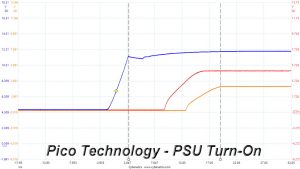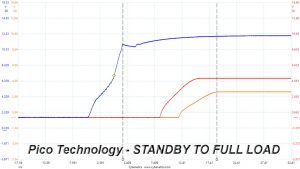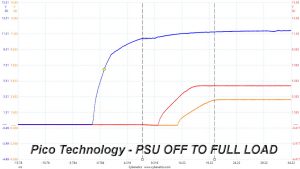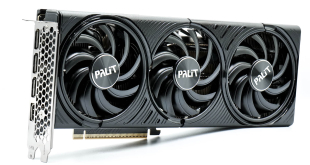Protection Features
Our protection features evaluation methodology is described in detail here.
|
Protection Features |
|
|
OCP |
12V1: >38.5A (>116.67%), <11.65V |
|
OPP |
878.21W (125.46%) |
|
OTP |
✓ (155°C @ 12V Heatsink) |
|
SCP |
12V: ✓ |
|
PWR_OK |
Accurate but less than 16ms |
|
NLO |
✓ |
|
SIP |
Surge: MOV |
The pair of +12V rails have a high enough OCP threshold, to cope with power spikes. The rest rails are ideally set at close to 130% for 5V and 3.3V and 120% for 5VSB. Lastly, the over power protection triggering point is set at 878W, which is the normal level for a 700W unit.
The over temperature protection is present and it kicks in once the heatsink that hosts the +12V rectifiers reaches 155°C.
There is short circuit protection, as expected, on all rails and the power ok signal is accurate but much lower than 16ms. Finally, we found an MOV in the transient filter and the inrush current protection is handled by a NTC thermistor, which isn't supported by a bypass relay though.
DC Power Sequencing
According to Intel’s most recent Power Supply Design Guide (revision 1.4) the +12V and 5V voltages must be equal or greater than the 3.3V rail’s output at all times, during the power-up and normal operation. For our first measurement, we turn the unit off and switch it back on without any load in any of the rails.
In the second test, we set the PSU to standby mode, dial full load and start it afterwards. In the last test, while the power supply is completely switched off (we cut off the power or switch the supply off through its power switch), we dial full load before restoring power.
There are no problems in these tests, as you can see from the scope's shots above. The 3.3V rail is always at a lower level than the 5V and +12V ones.
 KitGuru KitGuru.net – Tech News | Hardware News | Hardware Reviews | IOS | Mobile | Gaming | Graphics Cards
KitGuru KitGuru.net – Tech News | Hardware News | Hardware Reviews | IOS | Mobile | Gaming | Graphics Cards





